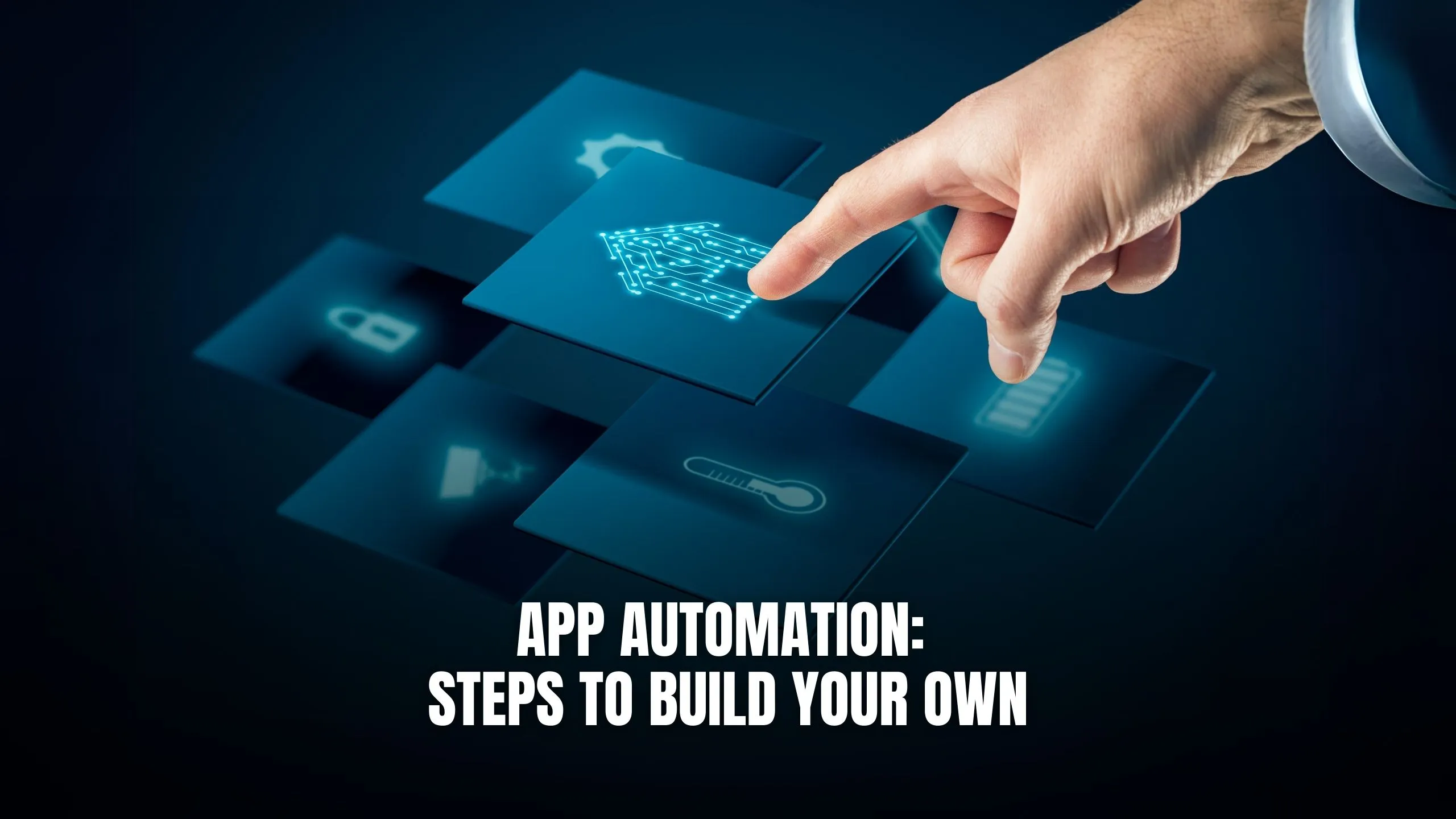App Automation: Steps to Build Your Own
-


App Automation: Steps to Build Your Own
App automation has become increasingly essential for streamlining processes and enhancing productivity in various industries. This blog outlines the steps to build your own app automation solution, empowering businesses to automate repetitive tasks, improve efficiency, and drive innovation.
1. Identify Automation Opportunities
The first step in building an app automation solution is to identify areas within your business processes where automation can bring significant benefits. Look for repetitive tasks, manual data entry processes, or workflows that require frequent human intervention. For example, automating customer onboarding processes, data synchronization between different systems, or email notifications for specific events can all be prime candidates for automation.
2. Choose the Right Tools and Platforms
Selecting the appropriate tools and platforms is crucial for successful app automation. Choose SaaS products that offer robust features, scalability, and integrations with other systems. Tools like Zapier, Integromat, Microsoft Power Automate, and Automate.io provide intuitive interfaces and support for a wide range of automation scenarios, making them ideal choices for building custom automation solutions without extensive coding knowledge.
3. Design Workflows and Processes
Once you’ve chosen your automation tools, map out your workflows and processes. Define the trigger events that will initiate automation, specify the actions to be performed, and set up any conditions or filters to control the flow of automation. Consider the sequence of steps, data dependencies, and error handling mechanisms to ensure smooth and reliable automation execution. For instance, design workflows to automatically create tasks in project management tools when new leads are added to CRM systems, or to send follow-up emails based on user interactions with your website.
4. Test and Iterate
Testing is a crucial step in the app automation development process. Before deploying your automation workflows into production, thoroughly test them in a staging environment to identify and address any issues or bugs. Validate the accuracy of data transformations, verify the functionality of conditional logic, and ensure that automation triggers and actions are executed as expected. Iterate on your workflows based on feedback and performance metrics to continuously optimize and refine your automation processes for maximum efficiency and reliability.
5. Deploy and Monitor
Once your automation workflows have been thoroughly tested, deploy them into your production environment. Monitor the performance of your automated processes regularly, tracking key metrics such as execution times, error rates, and cost savings. Implement monitoring and alerting mechanisms to proactively identify and address any issues that may arise. Continuously monitor your automation workflows’ effectiveness and make adjustments as needed to adapt to changing business requirements and optimize performance over time.
Relevant SaaS Products:
- Zapier: Integrate and automate workflows between your favorite apps with Zapier’s easy-to-use automation platform.
- Integromat: Connect your apps and automate workflows with Integromat’s powerful automation tool, featuring advanced data manipulation and transformation capabilities.
- Microsoft Power Automate: Automate tasks across Microsoft and third-party apps with Power Automate’s no-code platform.
- Automate.io: Automate your business processes and integrate your apps with Automate.io’s intuitive drag-and-drop automation builder, designed for non-technical users.
- IFTTT: IFTTT simplifies automation with customizable tasks, app integrations, and pre-built recipes for connecting apps and devices.
Conclusion
Building your own app automation solution empowers businesses to streamline processes, increase efficiency, and drive innovation. By identifying automation opportunities, choosing the right tools, designing effective workflows, testing rigorously, and continuously monitoring and optimizing performance, businesses can unlock the full potential of automation to achieve their goals and stay ahead in today’s competitive landscape.
Ready to Automate Your Business Processes?
Unlock the power of automation and streamline your workflows with Subscribed.fyi! Sign up for free at Subscribed.fyi Deals to access exclusive deals on top SaaS automation tools like Zapier, Integromat, Microsoft Power Automate, and more. Elevate your productivity and efficiency with Subscribed.fyi today!
Relevant Links:





